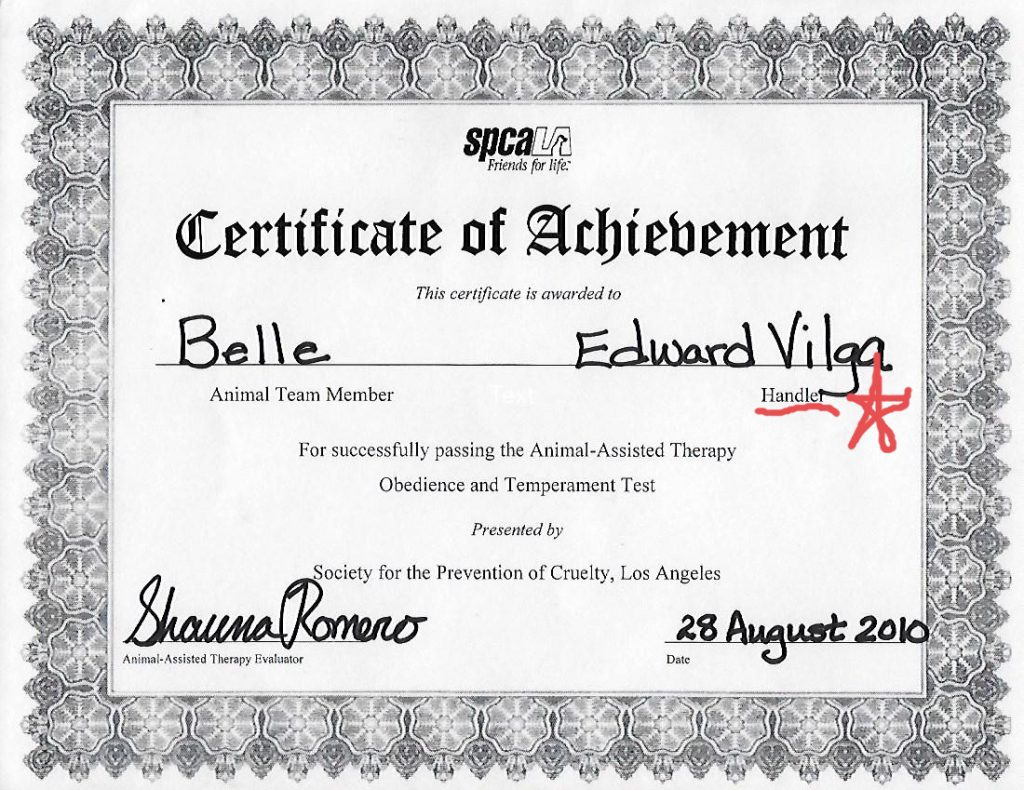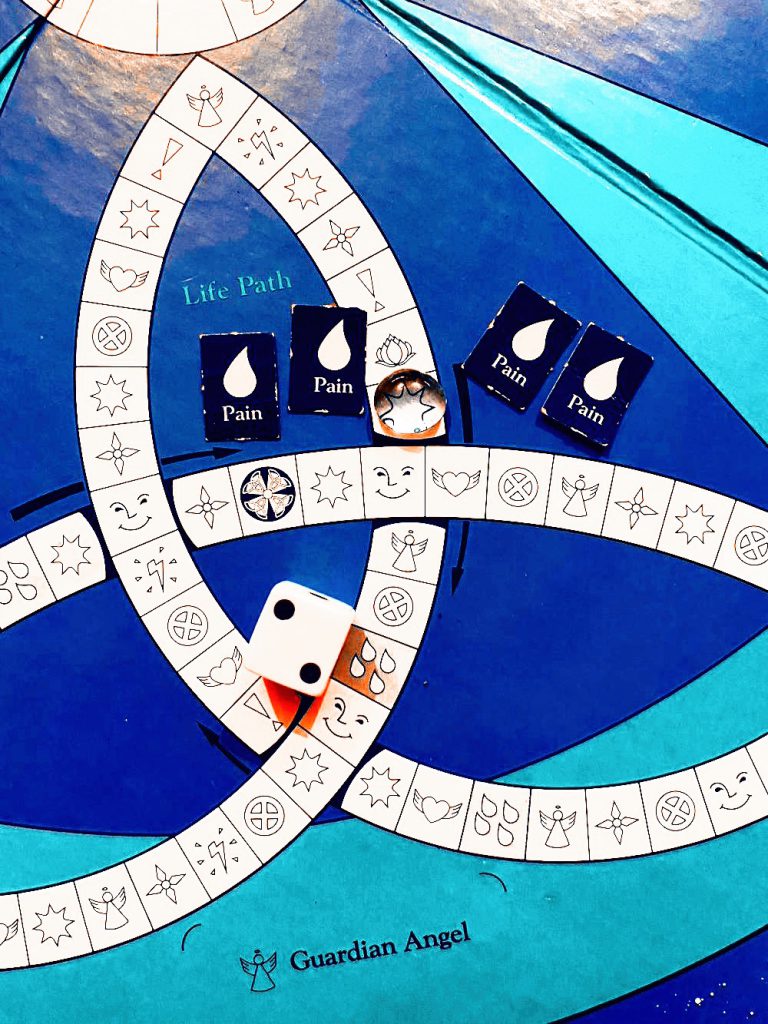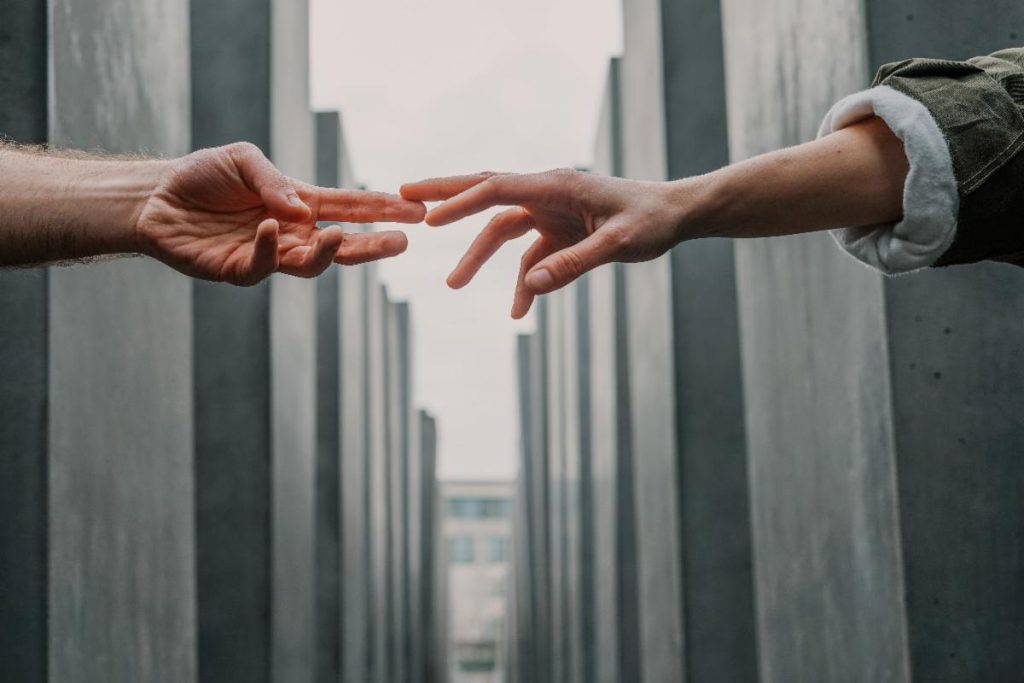I’m still a little overwhelmed (but in a very good way) by the amount of SUPPORT I received last week when I wrote about Belle.
People shared so many beautiful memories of her that I’d forgotten or which were uniquely theirs.
In particular, I didn’t realize how many artistic events she’d attended, always a perfectly behaved audience member.
Friends reminded me of Belle’s presence at:
• A gorgeous performance of the Bach partitas and Schubert impromptus by Simone Dinnerstein.
• A brilliant, very intense surreal multimedia “tragicomedy” by our friend Patricia Scanlon which won several LA Weekly awards.
• An avant-garde benefit performance for some LGBTQ organization where a bald woman got naked onstage and gave birth to a basketball painted as Mother Earth.
In other words, Belle was a very sophisticated, VERY cultured dog.
I was also deeply moved by all the emails from people who never actually met Belle but felt connected to her, either through these newsletters or from my other writing.
(Again, UPWARD DOG is free HERE; if you want a paperback, it’s on Amazon HERE.)
All the responses concretized my awareness of how many lives she touched with her sweetness.
And while I did my very best to give her the best life I could imagine, having her really meant that I was the lucky one.
Ever since she passed her Human Society training tests brilliantly (as an official service dog, we used to visit old folks’ homes together), I would cross out “Owner” on all vet forms and write in “Celebrity Handler” instead.
It seemed a far more accurate description of our relationship.

During this flood of SUPPORT (new meditation HERE), one topic that comes up frequently is if / when I should get a new dog.
(Note: some of you were sweet enough to think that Leo is mine; he’s not. Although Belle has mentored him, and he has a special place in my heart, he belongs to my neighbors.)
One of my dearest old friends––who fully understands and began the conversation with “it’s probably too soon but”––has even been sending me photos of available rescue puppies…
And I am sorely tempted to grab one immediately.
And yet…it’s too soon.
…or is it…?
One of the greatest set of insights I’ve gotten from playing the board game Transformation is how people (especially me) react and hold on to pain.
As you play, you land on all sorts of positive things (Angels! Insights!), but there are also Setback Cards that involve receiving at least one pain piece.
There’s even landing on a Depression square that results in four pains.
The first time I played was while sailing in the Tasman Sea, between Australia and New Zealand, with my amazing friend SARK who introduced me to the game.
Each time I landed on something that required receiving a pain, I more or less looked up to the heavens, crying out like Job, “Why God…Why?”
I realized that the board game was a microcosm of my (childlike) worldview that if somehow, I did all the right things, both strategic and moral, I would escape suffering.
Although I was in my 30s then, it reflected the conditioning of the Straight-A student, the eager Altar Boy, and now the dedicated New Ager.
Here’s how the pain pieces function in the game (and how you get rid of them).
Simply put, pain only slows you down.
When you roll the die, you subtract the number of pains you have and then move forward.
For example, if you roll a four and you have one pain piece, you can only move forward three spaces.
What’s the process for getting rid of pain?
After receiving pain, the simplest method is that on your next turn, you trade in one of your Awareness Cards for one pain piece.
Unfortunately, sometimes you might not have earned any awareness.
You are forced to keep your pain until you do.
And, if you accumulate six or more pain pieces, since the die only goes up to six, without awarenesses to trade, you can’t move forward.
Bottom line: With that much pain, you’re frozen exactly where you are.
(…sigh…)
What are your options then?
Do you just give up?
Drowning in pain without awarenesses, unable to move forward, are you more or less a “spiritual (board game) failure?”
Do you simply walk away defeated, your overload of pain forcing you to forfeit the game?
No––there’s actually hope.
You see, to quote Robert Frost:
“The only way out is through.”
Specifically, in the board game and in life, it’s through other people.
Another player has to land on a Miracle Square, removing everyone’s pain.
Or a player has to land on a Blessings Square, whereby everyone gains awarenesses.
There are a few other similar options, but you get the point:
When you’re six pains in, someone else has to help you remove them.
Receiving support is the only way back into the game.
And that’s why SUPPORT is the theme of this month’s new meditation HERE.
Note: There is no right or wrong philosophy regarding pain in the game.
Many times people decide they want to keep the pain for several turns, just subtracting it as they move forward.
Other times, people directly reference Carly Simon’s 1974 hit, saying they just “Haven’t got time for the pain.”
They trade it away immediately.
Over the years, I’ve moved from Camp Avoidance, more towards seeing the wisdom of being able to sit with the pain, perhaps seeing what it might have to tell me.
And yet…it’s very hard to know when you’re holding on too long, much less if you’re in danger of losing the ability to move forward.
I don’t know how many turns and tossing of the die it will be before I get another dog, but right now I know I need to stay with the pain.
Just for a bit.
It feels…necessary.
(At the same time, despite the impracticality of hiding their 90 pound German Shepard from my next-door neighbors, there’s also a part of me that’s always seriously considering dognapping Leo.)
And finally, as always, I’m reminded of Rumi’s wisdom:
The Cure for the Pain is in the Pain.
(I don’t really know what that means…but I also know that it’s true.)
Thank you all again so much for your incredible SUPPORT.
It means everything.
Namaste for Now,
P.S. New Meditation Is HERE
Also, I’ve opened up one more slot for Creative Coaching next month HERE.







